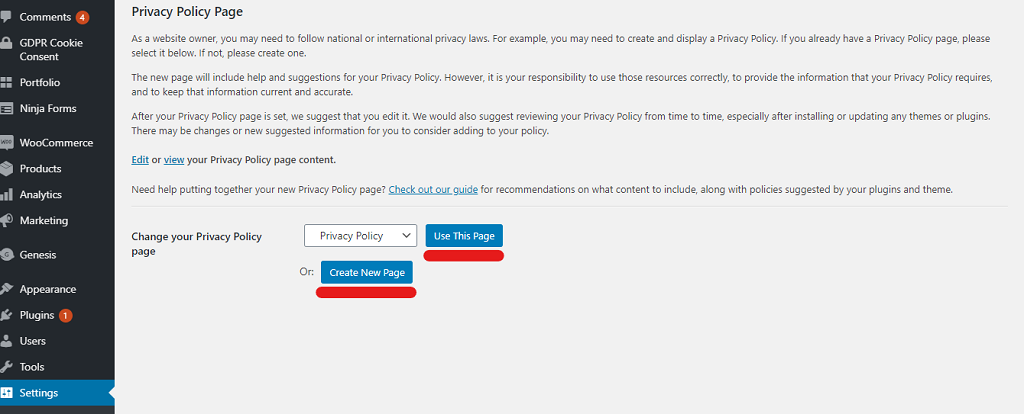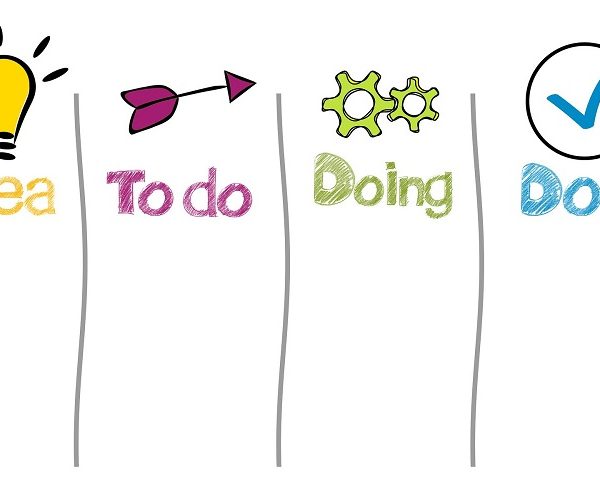
There are so many things to consider as a “newbie” starting on your blogging journey. I know so many things to do, to take note of, remember, or learn to make your blog successful. It can be quite a bit of a learning curve, especially when you think of using WordPress as a blogging platform, which can be motivating to some and a deterrent to others.
Every day of my initial blogging journey, I had to set out on a new learning venture or continue what I already started, and for me, there is no giving up. My blog is a gift to myself, my escape, and I love it! It’s my creative outlet to learn and help others in their journey. Your blog needs your time and devotion, and you must nurture and tend to it as you would a child or garden to see positive results.
My earlier blog post on Simple Steps To Get Your Blog Started will guide you on creating a blog. Once you have started putting content on your blog, it’s advisable to include three main legal pages on your blog site to protect you and prevent you from losing sleep unnecessarily.
I’ll share with you the steps I took and ones you can also choose to get legal pages for your blog. Making legal pages a part of your blog is an additional step to launching your blog successfully.
This blog post will discuss three legal pages for your blog and every other blog; Privacy Policy, Disclaimer, and Terms and Conditions.
Before we begin read my disclaimer:
Disclaimer: I am not a lawyer. This blog post is intended for informational purposes only and does not constitute legal advice in any way. I am not liable for or responsible for damages, resulting from or relating to the use of this information.
What is a Privacy Policy?
A Privacy Policy is a legal agreement that explains how YOUR website collects personal information from your audience and how you plan to use this information. There are several different types of information that can obtain from your audience on your website, such as name, email address, credit card information, etc.
If you are not that far along in creating your website, I will share with you some ways in which you will eventually collect personal data from your audience.
- Cookies– Cookies are files that are stored on a user’s computer, accessing user-specific details in an attempt to improve their browsing experience. For this reason, you should obtain a cookie use consent from visitors to your site; it’s mandatory.
- Google Analytics- Google Analytics is a software that bloggers use to track data from their visitors, such as how many visitors have been to their blog in the last 30 days.
- Contact Forms– Once you’ve started writing content for your blog and engaging with your audience, one method visitors will use to stay in touch with you and you with them is through contact forms. A contact form will be a page on your website for visitors or brands to get in touch with you. It often has three fields to be completed by a user, name, email, and message.
- Plugins– Instead of installing google analytics your blog, maybe you’ve decided to use a plugin. Social media plugins also collect personal information from visitors that access your site.
What Should Your Privacy Policy Include?
When drafting a privacy policy, whether that’s with your Attorney, purchasing a policy online created for your website or one you wrote it yourself. Consider these areas for mention at the very least:
The name of your website and contact information– You can find this information at the beginning or end of any privacy policy.
The type of information your site collects will most likely include name, email address, date of birth, credit card information, browsing history, and ZIP code. Collect only data that is necessary; for example, my website does not require your LAST name to subscribe to my email list; it’s not essential.
How you intend to use the collected information– You may use your audience’s data to improve your blog, stay in contact with your audience, or provide services like ebooks or courses.
Data sharing with third-party– As I mentioned earlier, Google Analytics is one way of tracking visitors to your sites. Blog traffic analytics will come in handy when approaching Ad companies or brands, for example.
How to opt out of data collection- You should let your audience know how to opt-out of your email list. Your subscribers can opt out of an email list by clicking the unsubscribe link in your email.
I know that was a mouthful but stick with me, and all these are areas that can quickly be taken care of once you understand where to find the resources your need for your blog.
How Can I Add A Privacy Policy Page In WordPress?

It’s simple to add a privacy policy page in WordPress. From your dashboard, scroll down to setting > and select the privacy policy page. There are two options available, as seen highlighted in red above 1) use this page and 2) create your own. Option one is a default draft that can be personalized and published. You can find a complete guide on editing each section of the policy on the same page.
Disclaimer vs Disclosure Page
At times disclaimer and disclosure policy are confused and used interchangeably, but they are entirely different. Let me explain why they should not be used interchangeably.
A disclaimer is used to avoid being held liable for website information that may have been taken by an audience as legal advice or medical advice. Refer to the disclaimer I made at the beginning of this post. Disclaimer policies may include disclosures.
On the other hand, a disclosure is making information known, such as I use affiliate links on my website. So now you’re probably saying this is starting to look like an additional legal page. If you participate at all in any affiliate marketing, you will be required to disclose that information.
Your affiliate marketing disclosure should be posted on your website, and it must stare your visitors in the face. That’s transparency. Here is my affiliate marketing banner, which is at the top of any blog post containing affiliate links.

Use an affiliate disclosure for blog posts containing affiliate links (endorsed products or services, sponsored posts). Here are a few places to place your affiliate disclosure banner.
- The main page of your blog
- At the top of a blog post
- Bottom of a blog post before an affiliate link
- Middle of a page before an affiliate link
- Next to an affiliate link
Disclaimer Page
Here’s why your blog needs a disclaimer page. The disclaimer page will relieve you of legal responsibility for the contents of your posts. In other words, it will protect from lawsuits.
Be sure to tailor your disclaimer policy to be aligned with your content and niche. If you’re blogging about affiliate marketing on your blog, your disclaimer page should not be disclaiming medical advice. Your disclaimer will also protect you from inaccuracies in your blog posts. There is new knowledge emerging daily, and content may not always be up to date or complete.
Common Disclaimer Policy Content
As mentioned before, your disclaimer policy should be niche-specific. All disclaimer policies should have the same theme that content of programs or websites, etc. is meant for information purposes only.
Here is a list of common disclaimer page content:
Opinion Disclaimer– This is pretty common on talk shows. The views expressed on this program are not reflective of the station airing the programs. If you’re employed in a company and use a blog to express your own opinion, this will be included in your disclaimer policy.
Affiliate Links– Declare to your audience that you are a brand affiliate when endorsing products and that you earn a commission when they use your links to make purchases.
No Guarantee Results– If your blog content is about fitness programs, nutritional programs, or beauty products, make it clear to your audience that they may not achieve the same results from following your plan or products.
Advertisement- Declare to your audience where there is a paid partnership with an advertising company.
How to Add Disclaimer Page to WordPress
Log into your WordPress dashboard>, look for Page > and Select New page. Name the page> Disclaimer or a name of your choice, > enter disclaimer policy text on the page then> publish.
Terms and Conditions
Your website needs a terms and conditions policy so visitors know how to use your site. It states the rules of your website by naming allowed and prohibited content or use. The terms and conditions policy will allow you to terminate visitors’ use of your website if they violate terms of use or break copyright infringement.
What to Include In a Terms and Conditions Policy
Copyright notice– Protect your images and content from being copied, misused, or stolen.
Website use– Your terms and conditions policy should clearly explain how to use your site, for example, no profanities.
Termination Rights– It let your visitors know you can terminate the use of the website if there are breaches to terms and condition of use.
Refund and exchange policy– once you sell any products, you will need to have a refund and exchange policy, so buyers know under what conditions they can receive a refund or exchange.
After all that content, your next thought is probable, where do I get these policies? And rightly so. You can use a friend that is an Attorney or use paid services. There are free templates that can be found online, but that is not my recommendation to you.
Invest in your website by including these three legal pages. I found two sites that charge a one-time fee to get these policies created by asking you questions about your website or business. They are termsfeed.com and privacypolicies.com; I chose terms feed since it was more popular; however, policy generator questionnaires on both websites are identical.
Related Posts:
Anyway, that all for this post. Thanks for sticking to the end of you did ;)).
Leave a comment in the comment telling me where you got your legal pages.










Leave a Reply